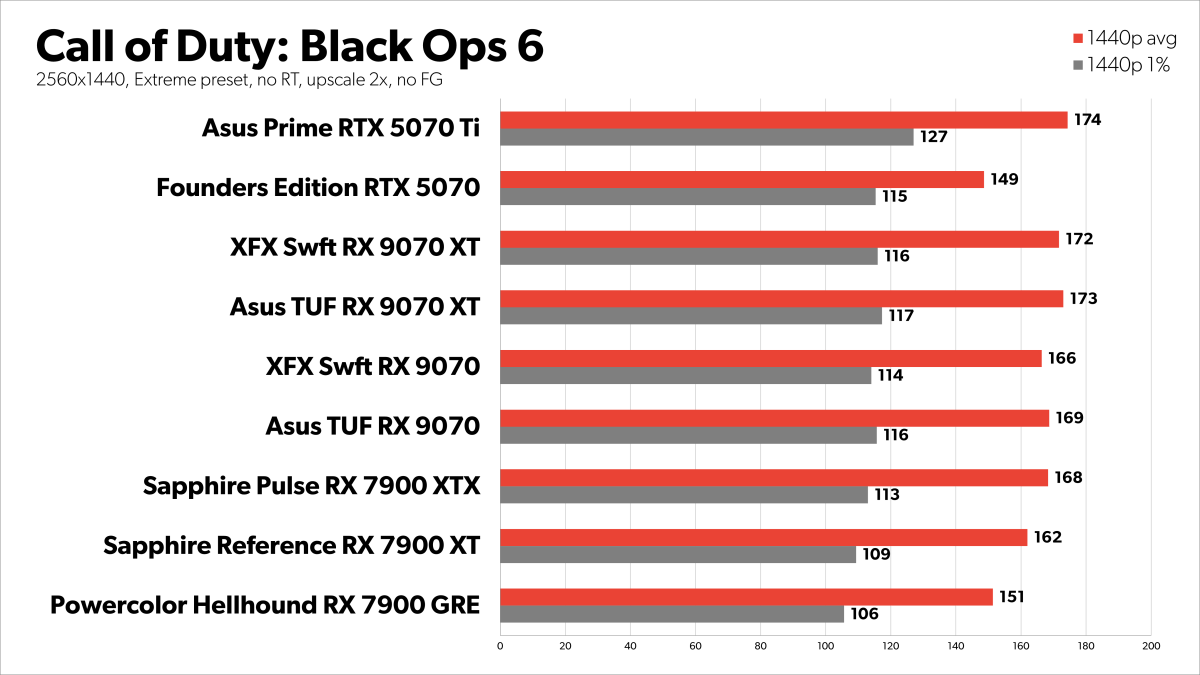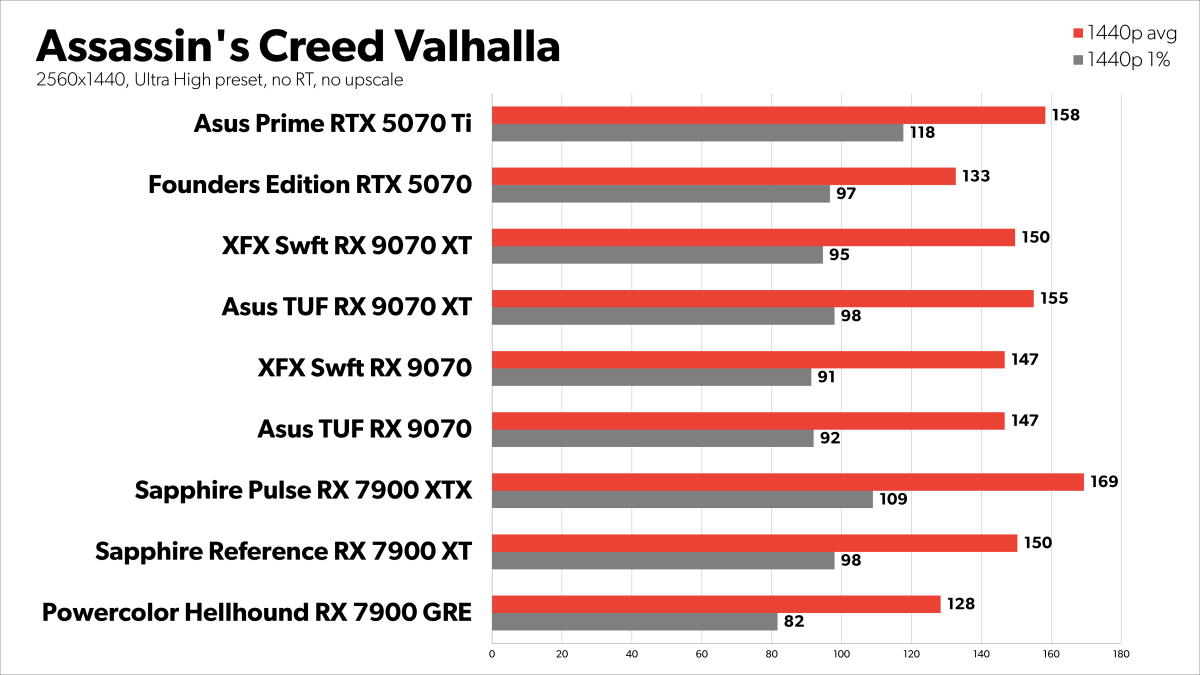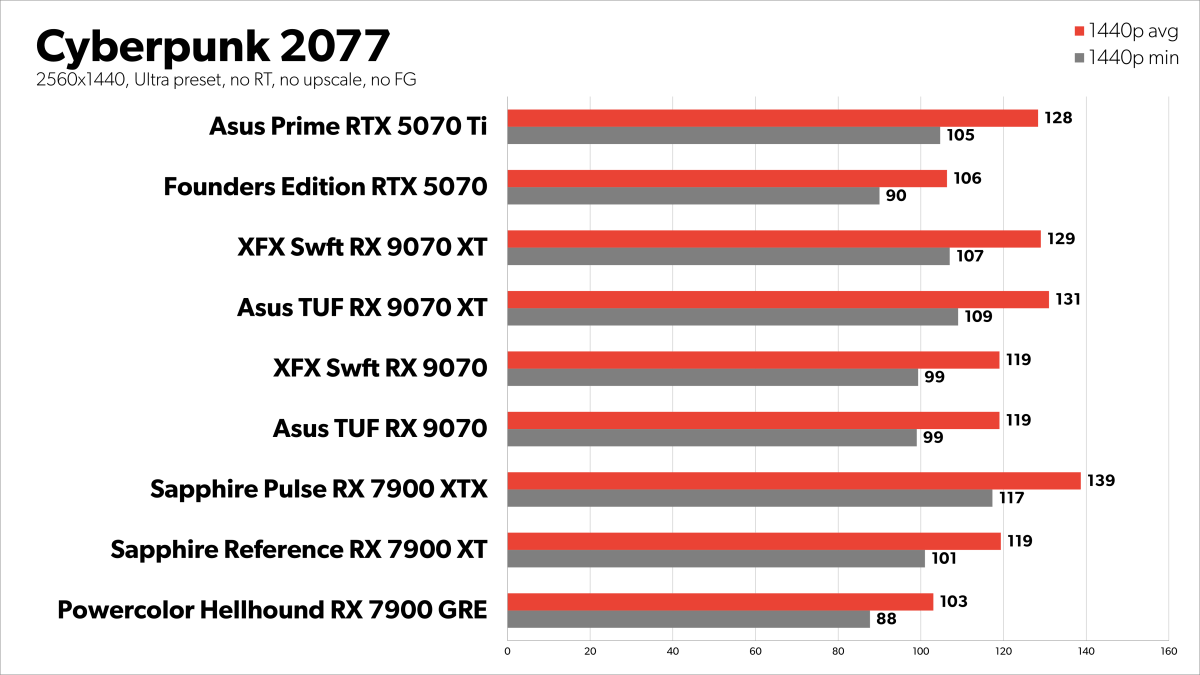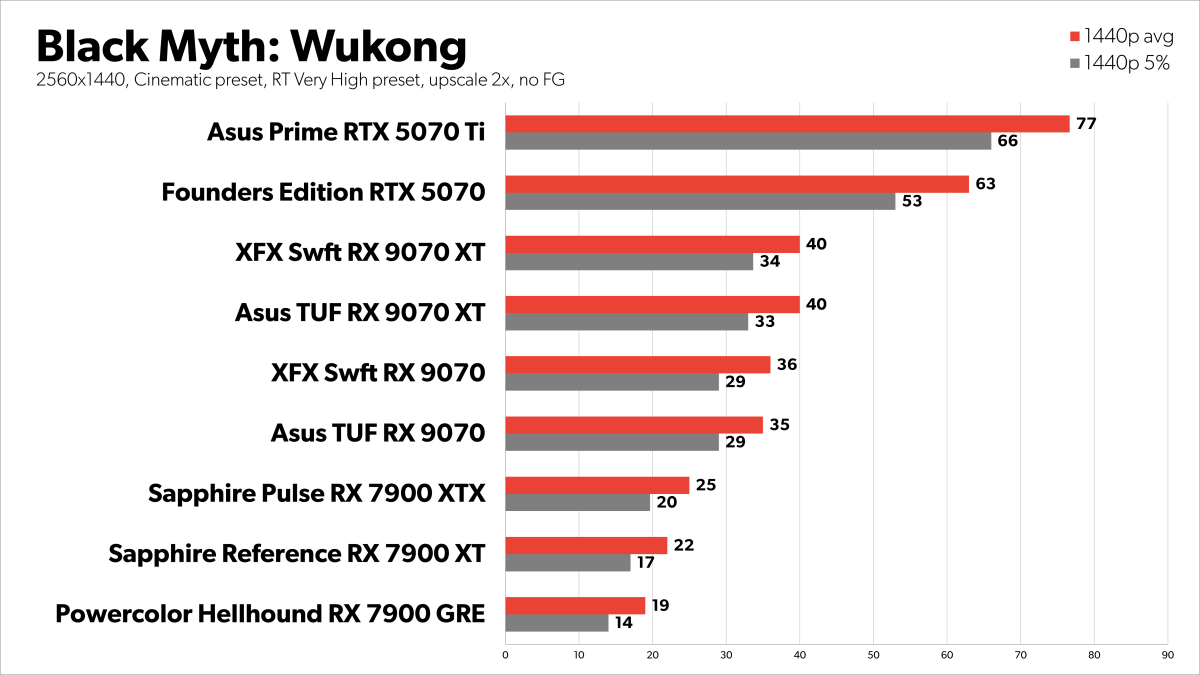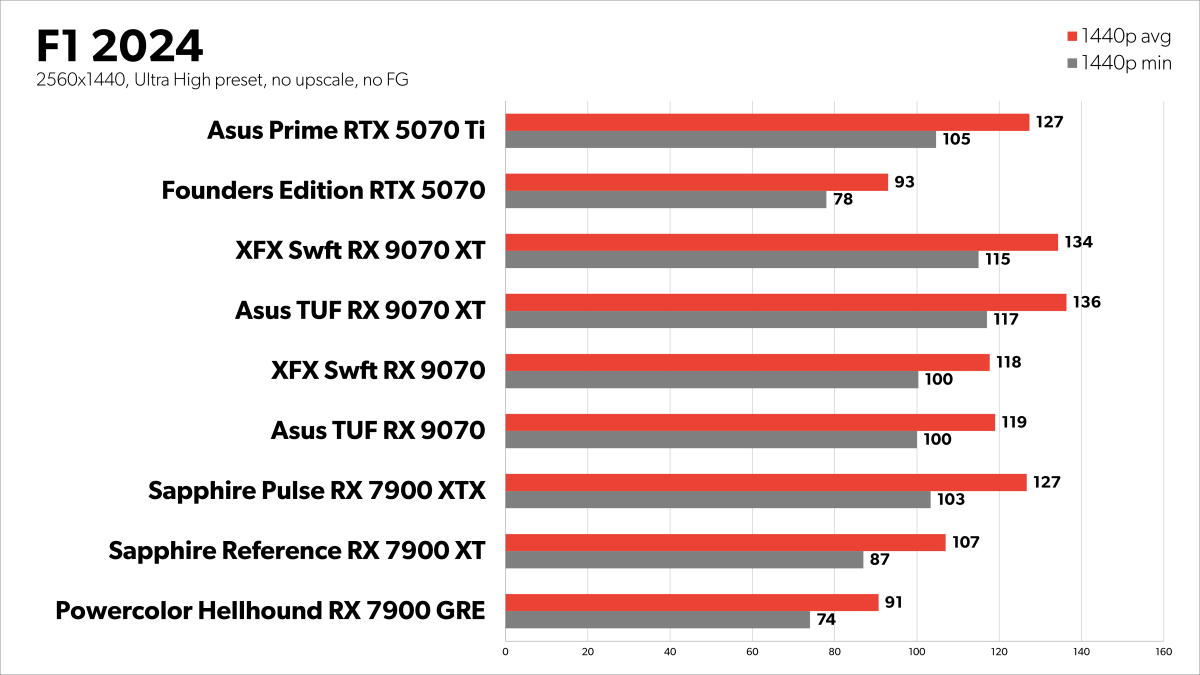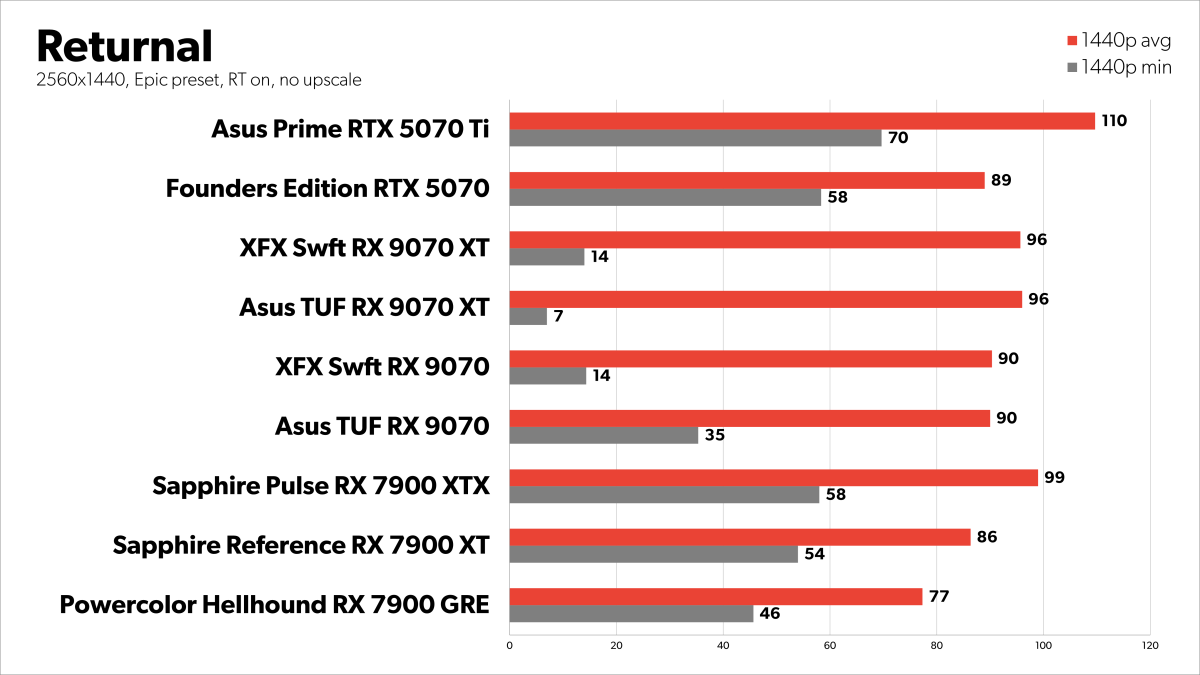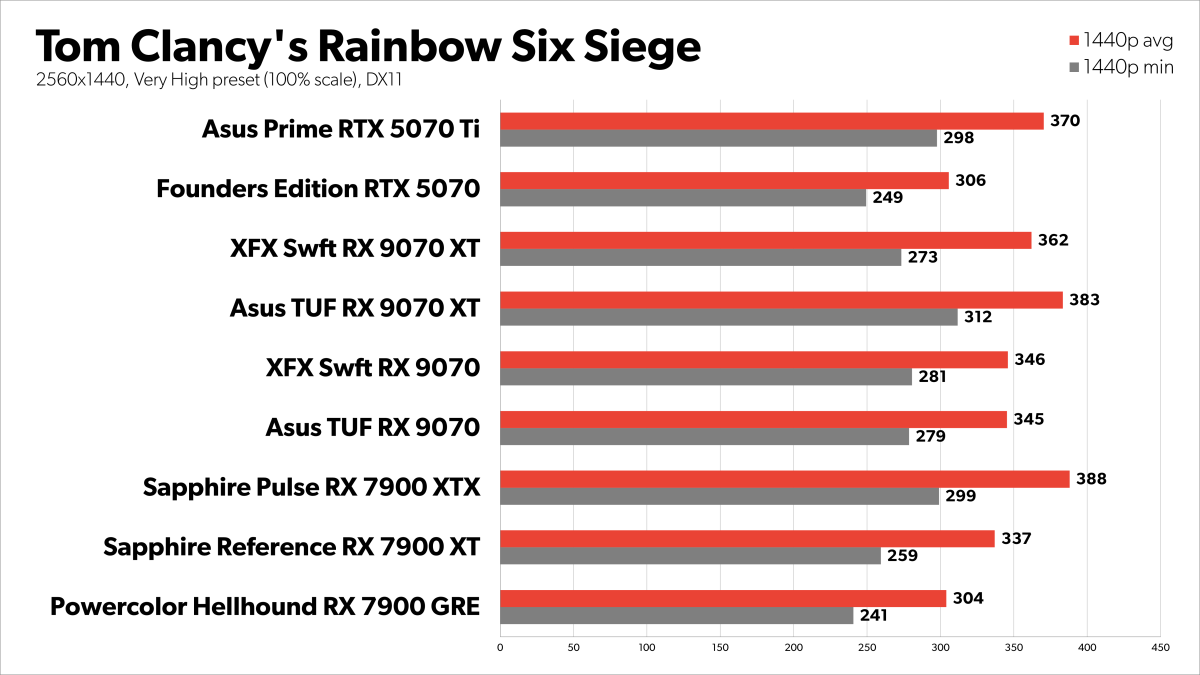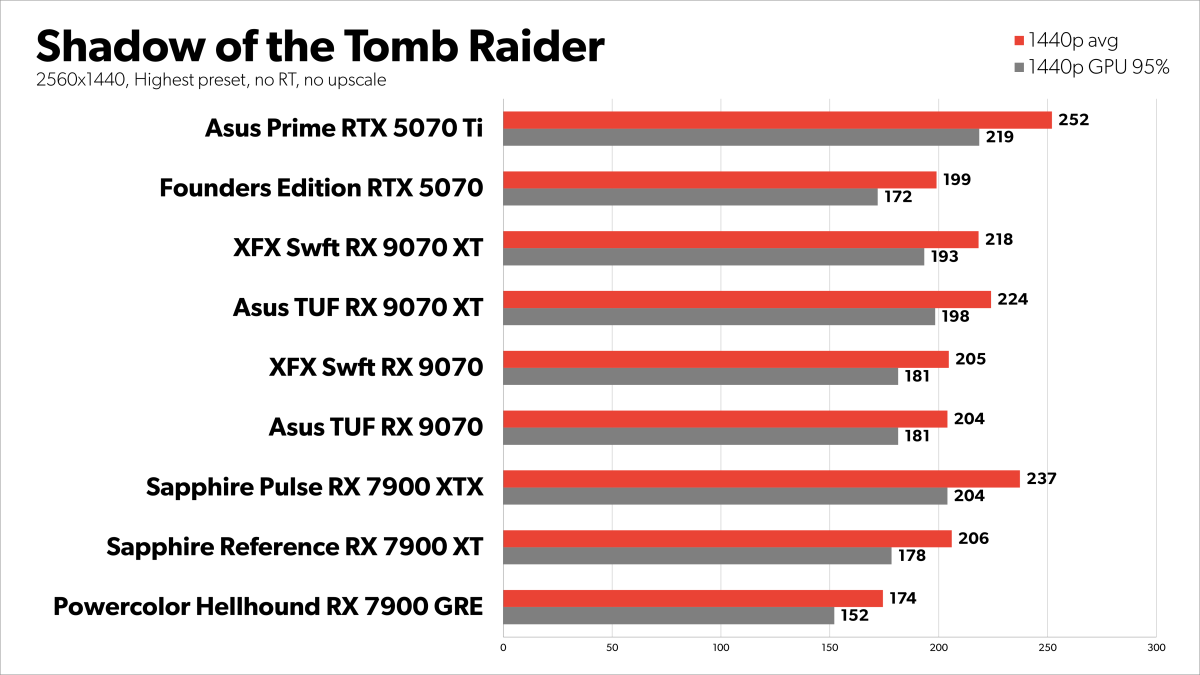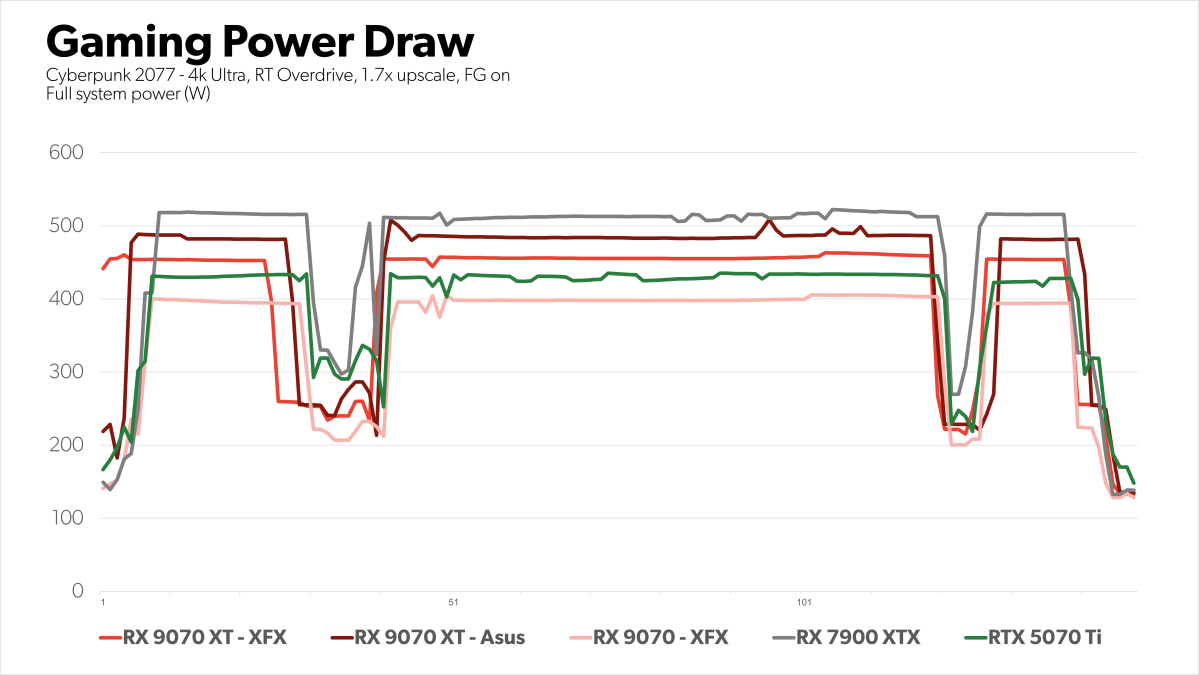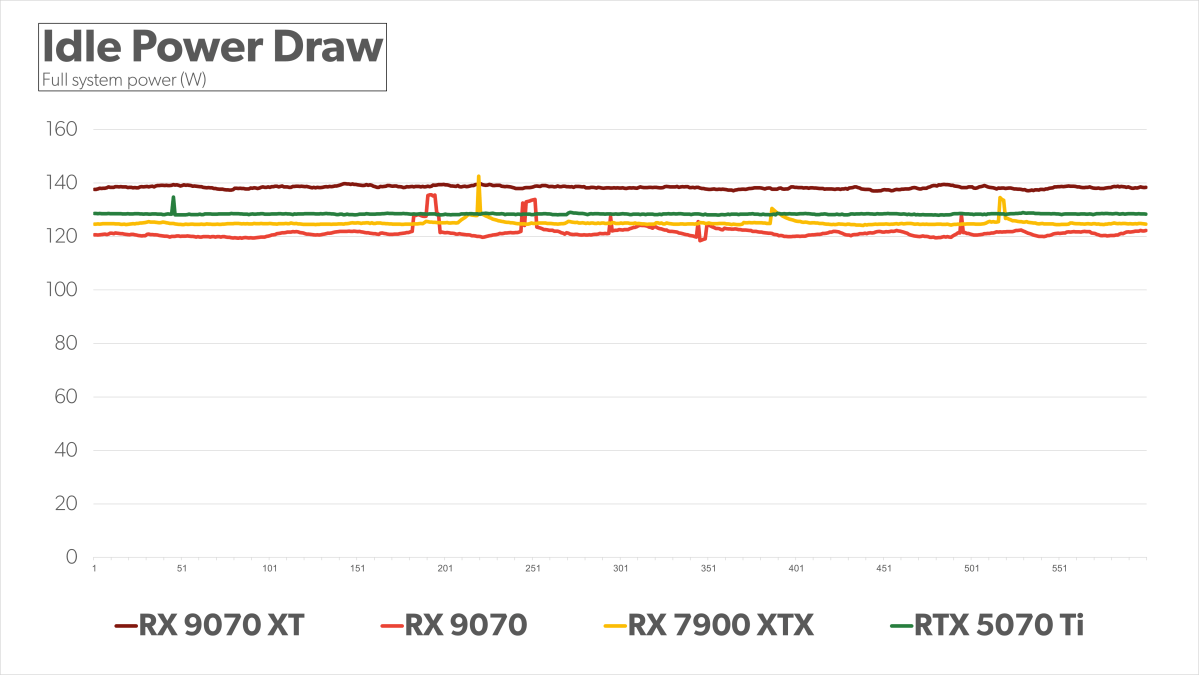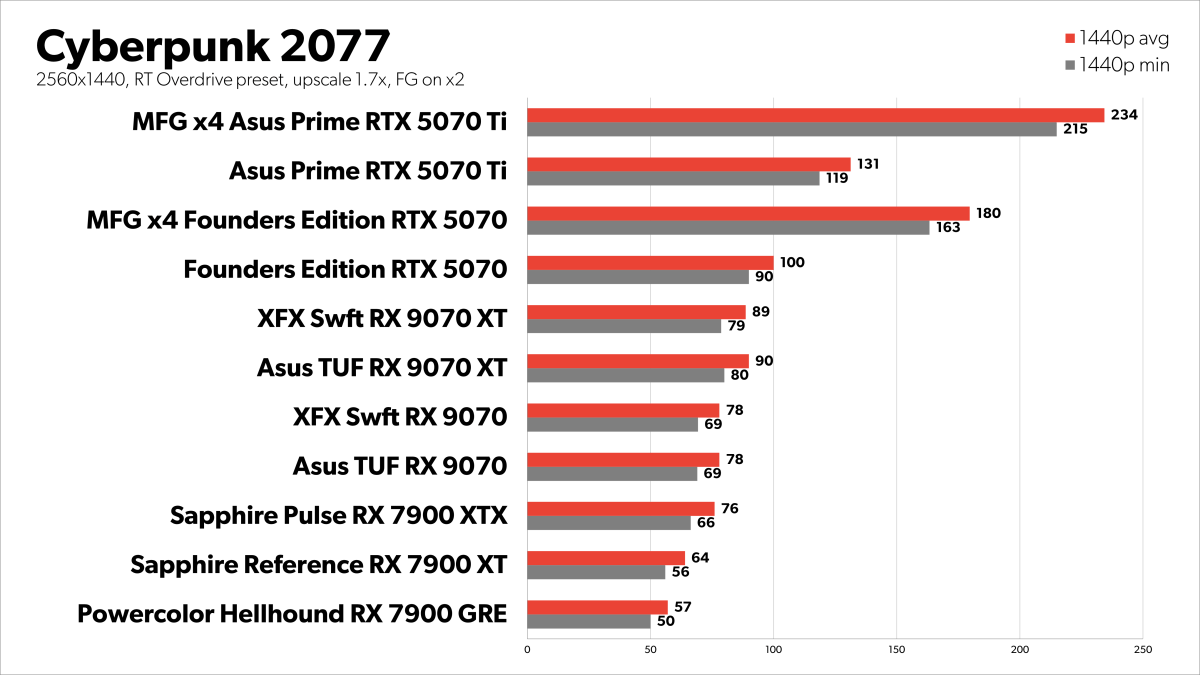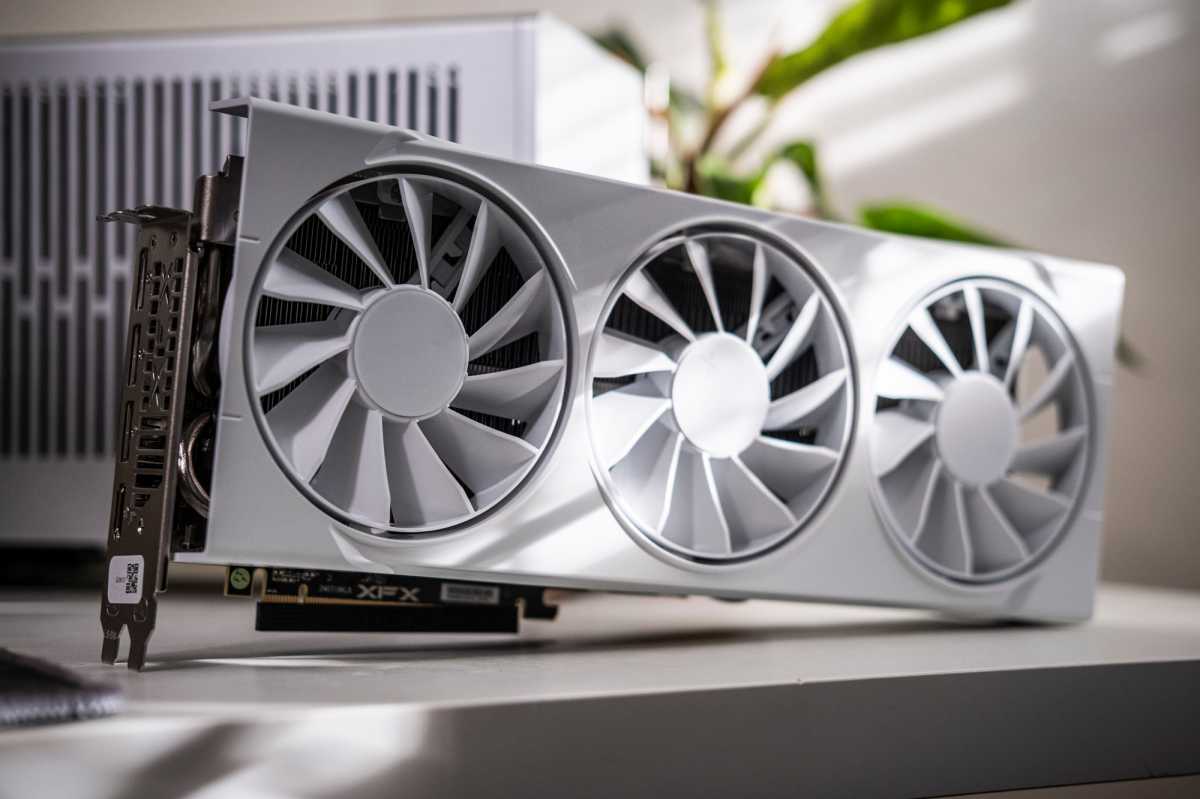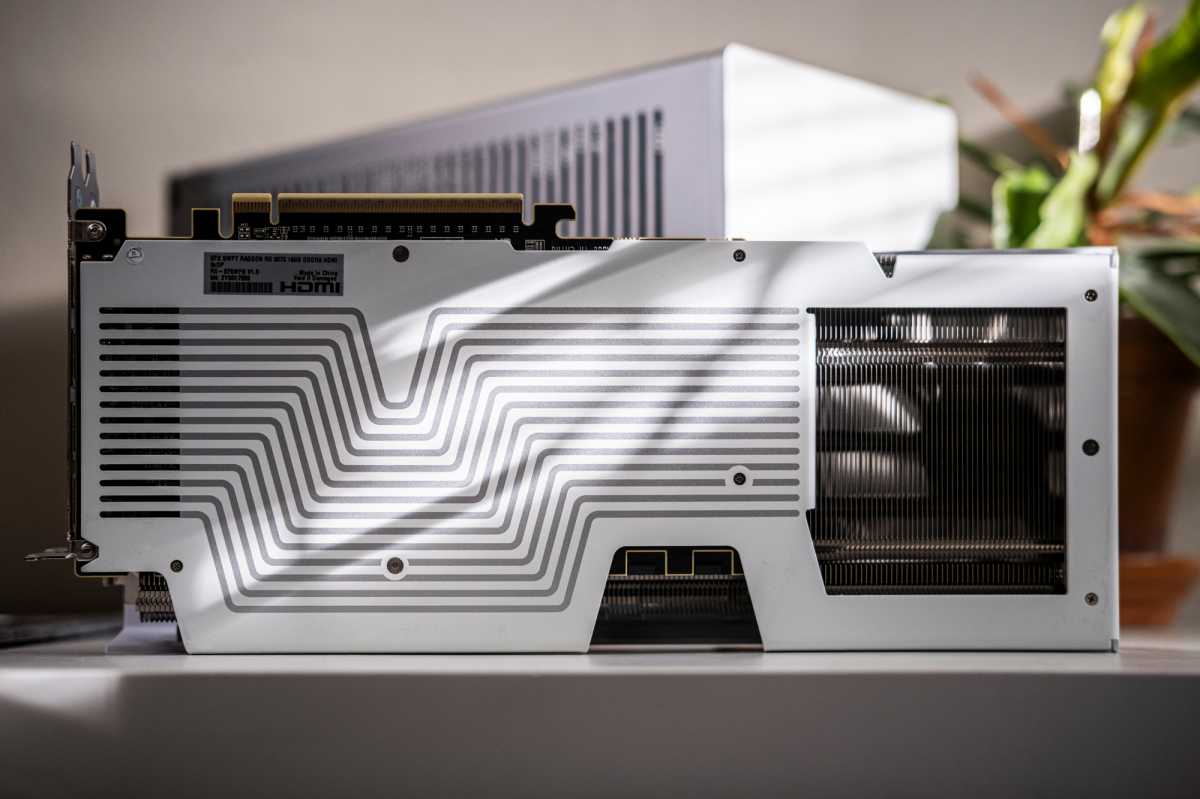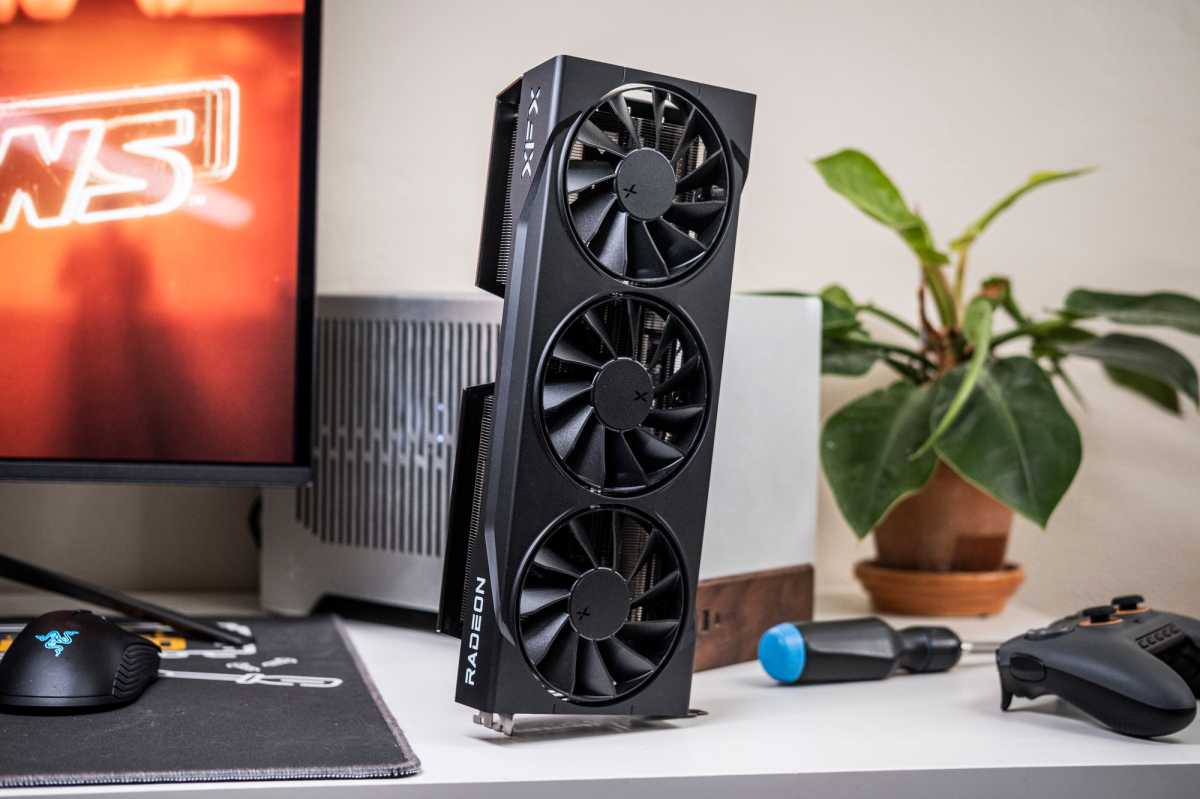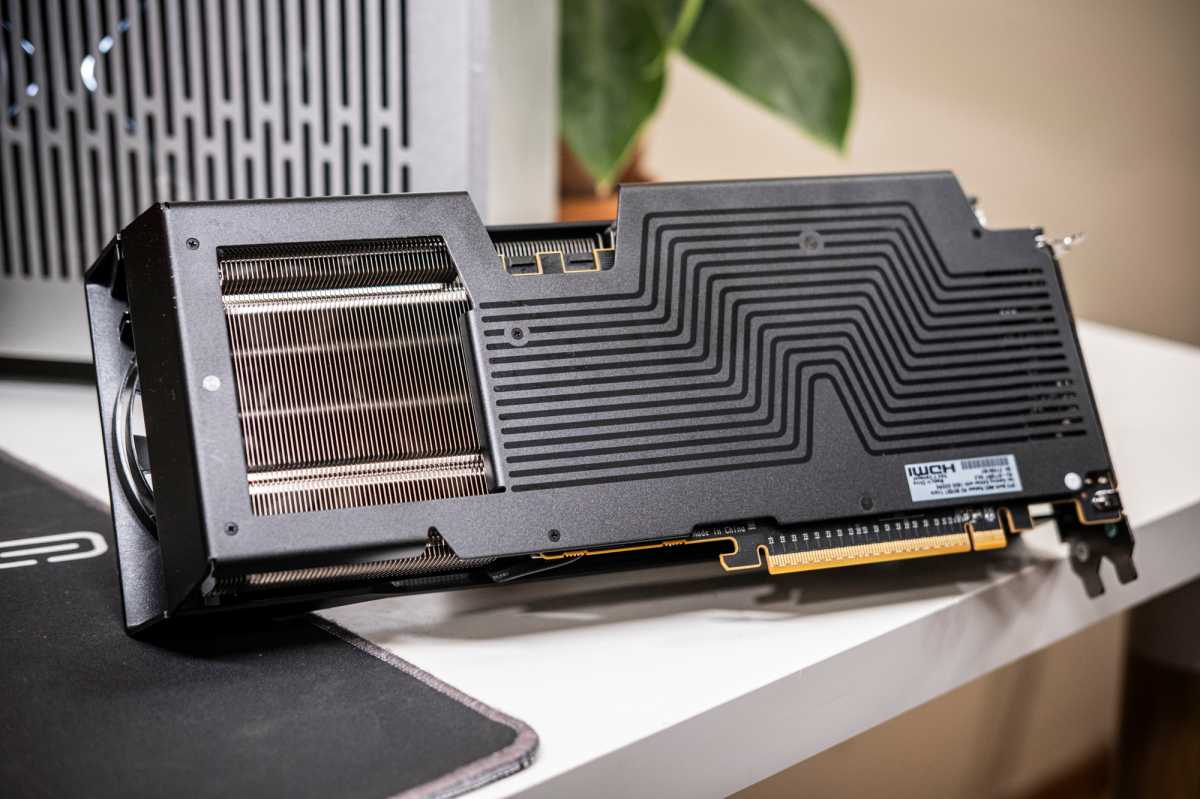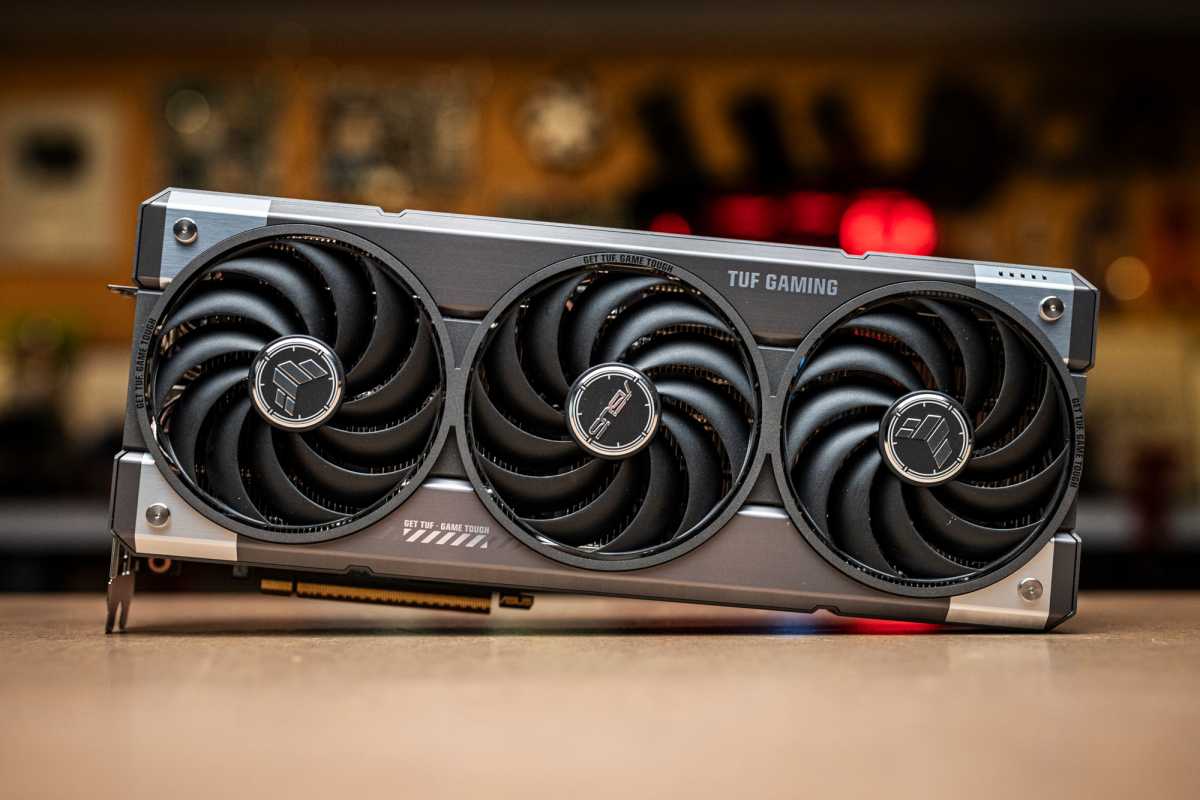 At a glance
At a glanceExpert's Rating
Pros
- Fantastic 1440p gaming performance
- Radeon 9070 beats RTX 5070 performance; Radeon 9070 XT goes toe-to-toe with RTX 5070 Ti for $150 less
- 16GB of memory and 256-bit bus are built for 4K gaming and strenuous modern games
- Ray tracing performance is vastly improved
- AI accelerators enable FSR 4 upscaling
- Hypr-RX can turbocharge performance in 1,000s of games, with some visual compromises
Cons
- FSR 4 was frustrating to use and inConsistently applied
- Much slower than RTX 5070 in AI text generation and Premiere Pro
- Occasional driver crashes; bad minimum frame times in Returnal
- No answer to Nvidia’s fantastic DLSS 4 Multi Frame Generation feature
Our Verdict
The Radeon RX 9070 and 9070 XT offer much faster performance and more memory than Nvidia’s lackluster RTX 5070. Some software bugs mar the experience but overall, AMD’s 9070 graphics cards offer such a compelling mix of performance, value, and memory capacity that it’s worth accepting those quibbles.
Price When Reviewed
This value will show the geolocated pricing text for product undefined
Best Pricing Today
Nvidia fumbled the ball with its $549 GeForce RTX 5070, and AMD’s new Radeon RX 9070 and 9070 XT are primed to seize advantage.
The RTX 5070, hitting store shelves today, is a good 1440p graphics card but a stagnant generational sidegrade at best. Enter the $549 Radeon RX 9070 and $599 Radeon RX 9070 XT, launching tomorrow. Both cards are faster than the RTX 5070, with the 9070 XT going toe-to-toe with the $750 RTX 5070 Ti in many games, and each includes an ample 16GB of VRAM. The RTX 5070 is stuck with a disappointing 12GB. Even ray tracing, long an AMD weakness, improved dramatically!
Bottom line? AMD’s Radeon RX 9070 series is the new 1440p gaming champion. If you opt for an RTX 5070 instead to get in on Nvidia’s DLSS 4 greatness, you’re making some major sacrifices in other areas.
We’ve spent the past week testing the XFX Swift Triple Fan Gaming Edition and Asus TUF Gaming OC models of both of these cards. The Asus card is a heavily juiced custom model that sports an extra third power connector compared to other models – all the better to overclock with. Here are the key things you need to know before buying an AMD Radeon RX 9070 or 9070 XT.
AMD Radeon RX 9070 and 9070 XT performance benchmarks
Our benchmarks above include results from both the aforementioned XFX and Asus 9070 cards, albeit only at 1440p resolution. We skipped 4K testing to be able to include multiple Radeon 9070 models in these graphs.
The Radeon RX 9070 cards kill it.
Even though AMD’s new GPUs remain well behind Nvidia’s in complex ray tracing scenarios – performance is great in lighter RT loads, however – the $549 Radeon RX 9070 is flat-out faster than the $549 RTX 5070 when you average out the combined results from all games in our suite. All told, the Radeon 9070 runs about 8 percent faster than the RTX 5070 at 1440p. If you omit Black Myth Wukong – a very strenuous game with full, complex ray tracing, and an outlier where all Radeon GPUs noticeably falter – the Radeon RX 9070 is 11 percent faster than the RTX 5070. Wukong is the only game where the 9070 falls behind the 5070’s performance.
But wait! While that’s impressive, the $599 Radeon RX 9070 XT blows both the RTX 5070 as well as the vanilla 9070 out of the water for just $50 more.
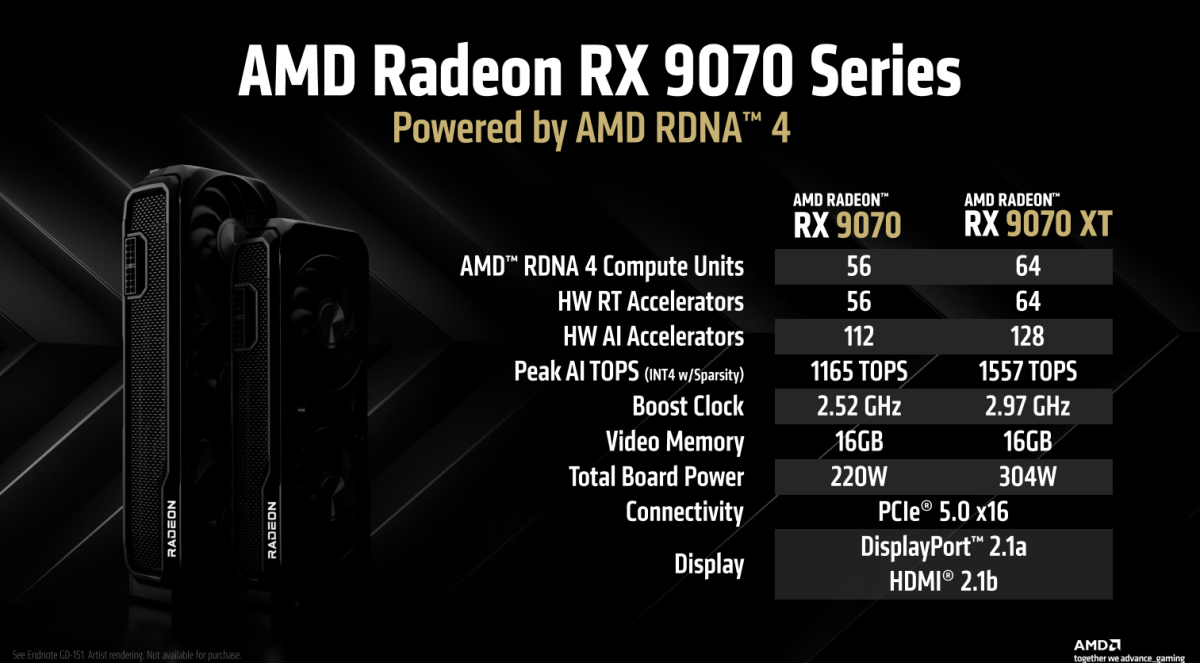
AMD
Across our suite, the Radeon 9070 XT runs 15 percent faster than the RTX 5070 on average, and 7 percent faster than the vanilla Radeon 9070. Excluding Black Myth Wukong, the 9070 XT runs 19 percent faster than the RTX 5070 – and it comes with 16GB of onboard memory, compared to the RTX 5070’s paltry 12GB. This is a major, major win for AMD.
So major, in fact, that the Radeon RX 9070 XT punches above its weight class to challenge the $750 RTX 5070 Ti. The 5070 Ti is only 6 percent faster than the Radeon 9070, and that plummets to 3 percent if you omit Black Myth.
Sweet holy moley. Did I mention that the RTX 5070 Ti costs $150 more than the Radeon RX 9070 XT? That means you get 3 to 6 percent more performance for a 25 percent jump in price – making the RTX 5070 Ti a terrible value proposition unless you really want DLSS 4 or better AI and creation chops.
One tiny note: The 1 percent lows in Returnal are terribly low, and only on the 9070 GPUs. We’ve made AMD aware of the problem.
AMD’s ray tracing doesn’t suck anymore
Let’s bring back some of our earlier performance graphs, zeroing in on performance in ray traced games specifically.
AMD focused heavily on improving ray tracing performance in RDNA 4, the next-generation graphics architecture powering the Radeon 9000-series. It shows in our benchmarks.
Ray tracing performance was a major Achilles’ Heel for prior Radeon generations. No more – mostly. The Radeon 9070 series performs neck-and-neck with the RTX 5070 in games with moderate to heavy levels of ray tracing. In F1 24 and Returnal, both AMD GPUs actually run faster than the RTX 5070. That’s nothing I ever thought I’d be saying about these new Radeon GPUs.
Adam Patrick Murray spent several days evaluating the 9070’s ray tracing performance in his small form-factor rig, playing RT games first on last generation’s Radeon RX 7900 XTX flagship, then the 9070. He’s still wrapping up final observations for a video – more on that soon – but in general, he reports large leaps forward in ray tracing performance on the 9070 XT.
It’s not all sunshine and rainbows though. Once games start layering on multiple ray tracing effects and more strenuous RT features, such as path tracing, AMD’s GPUs fall behind Nvidia’s. The RTX 5070 is markedly faster than the Radeon 9070s in Black Myth Wukong as well as Cyberpunk 2077’s grueling RT Overdrive mode. If complex ray tracing matters to you, Nvidia’s cards may be a better option.
16GB of memory FTW
So the Radeon RX 9070 series stomps the RTX 5070’s performance in all but the most strenuous ray traced games at 1440p. But here’s another consideration: The memory configuration of AMD’s offerings is more future-proof and built to run 4K as well. In fact, AMD marketed the Radeon 9070 series as “4K gaming at a 1440p price,” twisting a knife into Nvidia’s ribs.
That’s because Nvidia outfitted the RTX 5070 with just 12GB of memory, paired with a puny 192-bit bus. (Think of a memory bus like a road; the bigger the bus, the more lanes in the road, letting more traffic move more swiftly.) A configuration like that limits the 5070’s potential to 1440p gaming alone; while many games can run at 4K on the RTX 5070, you shouldn’t buy that GPU with 4K gaming in mind.
The Radeon RX 9070 and 9070 XT, meanwhile, both include an ample 16GB and a wider 256-bit bus. That means two critical things.
Connectez-vous pour ajouter un commentaire
Autres messages de ce groupe

TL;DR: Declutter your desk with these magnetic, extr

TL;DR: Get Word, Excel, PowerPoint, and more with a


Rumor has it that Microsoft is developing an Xbox-branded gaming hand

If you’re still on a 1080p monitor, it’s high time you upgraded to so

Doth mine eyes deceive me? The cheapest and, in many ways, most desir

You’re likely well-acquainted with classic CAPTCHA tests on websites.
